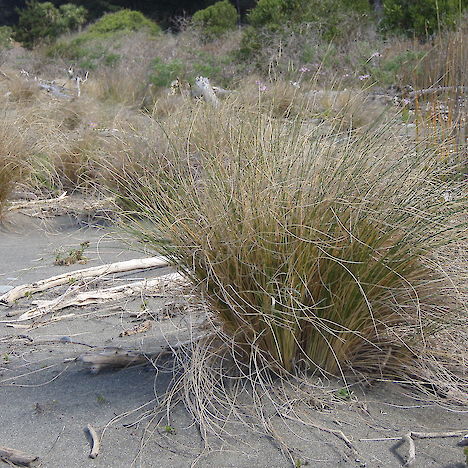Other names:
Austrofestuca littoralisThreat category:
At Risk: Declining?Regions:
Northland, Auckland, Waikato, Bay of Plenty, Gisborne, Hawkes Bay, Manawatu-Wanganui, Taranaki, Wellington, Nelson-Tasman, Marlborough, Westcoast, Canterbury, Otago, Southland
Key Features
- A silvery-green tussock grass from 50-100 cm tall, with stiff, smooth, tightly rolled, sharply pointed leaves that may become drooping. Narrow, spike-like inflorescences are usually held within the foliage, and have relatively large spikelets (1-1.5 cm) in which the awns are very short or lacking.
Distribution and Habitat
- Coastal sand dunes throughout New Zealand, but populations are scattered.
Threats
- Habitat modification and loss.
- Browsing by stock and feral animals (cattle, sheep, goats, horses, rabbits).
- Competition from introduced marram grass.
- 4WD vehicles.
Management Opportunities
- Survey for new locations.
- Mark known sites.
- Protection of habitat.
- Exclude stock and feral animals.
- Control marram grass.
- Propagate seed and re-establish at appropriate sites.
Monitoring Options
- Check existing populations annually.
- Report new locations to DOC, NZPCN.
Further Information and Support
- New Zealand Plant Conservation Network (NZPCN). http://www.nzpcn.org.nz
- Pest and marram grass management - Department of Conservation, Regional Councils.
- References:
- Bergin, D. (2000). Sand tussock on coastal sand dunes. Guidelines fro seed collection, propagation and establishment. CDVN Technical Bulletin No. 3. New Zealand Forest Research Institute Limited.
- Wilson, H.D. (1994). Field guide. Stewart Island Plants. Manuka Press, Christchurch. (cites P. billardierei as Poa triodioides).


